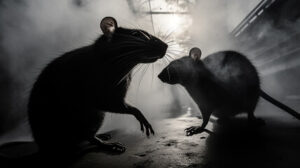Clearing spaces starts with the ability to remove what no longer serves a purpose. Rubbish removal and demolition may look simple but they involve careful planning, safety considerations, and a clear sense of transformation. These two activities reshape both the environment and the way people use their surroundings. When done properly, they create order out of chaos and give way to possibilities.

Demolition is not just about tearing down structures but also about preparing a safe foundation for new projects. Old buildings, walls, or infrastructure often need removal so new designs can rise in their place. In many cases, demolition is also about safety since unstable structures may cause harm. A controlled process makes sure risks are managed and future projects are secure. Call Now for more information.
Rubbish removal, on the other hand, is about dealing with the everyday waste and the large-scale debris left after demolition. It is more than picking up trash and involves sorting, transporting, and processing different types of waste. Some materials can be recycled, while others require careful handling. The goal is to reduce impact while restoring cleanliness to the site.
Modern rubbish removal combines efficiency with environmental responsibility. Specialized methods allow materials like metal, wood, and concrete to be reused. This reduces the strain on landfills and supports sustainable practices. What was once seen as waste now becomes a resource. By recognizing value in discarded items, removal becomes part of a larger cycle of renewal.
Demolition has also evolved beyond heavy machinery and brute force. Advanced techniques allow for precision removal of specific sections while protecting surrounding areas. Selective demolition ensures that valuable parts of a structure are preserved for reuse. This approach minimizes waste and saves on resources, making it both practical and responsible.
The connection between rubbish removal and demolition is undeniable. Every demolition project produces waste, and proper rubbish removal ensures the site is cleared efficiently. Without removal, demolition becomes incomplete. Together they form a process that transforms unusable spaces into clean canvases ready for growth.
Safety plays a vital role in both rubbish removal and demolition. Workers need protection from hazardous materials, falling debris, or unstable structures. Equipment must be handled with skill, and sites require supervision. Strict protocols ensure not only the safety of workers but also of nearby residents and properties. Ignoring safety can lead to accidents, delays, and unnecessary costs.
Rubbish removal in urban areas poses unique challenges because of limited space and dense populations. Narrow streets and crowded surroundings require strategic planning. Waste collection must avoid disrupting daily activities while keeping efficiency high. Demolition in such areas also demands precise techniques to prevent damage to neighboring properties. Each step requires coordination and expertise.
Environmental considerations are another factor driving changes in these fields. Disposal methods now focus on minimizing harm to the earth. Hazardous waste is treated with specialized systems, while recyclable materials are separated for new use. Regulations also guide companies to comply with sustainable standards. These efforts make the industries more responsible and adaptable to modern expectations.
The role of technology has become essential in both demolition and rubbish removal. Drones are used to survey sites and create accurate demolition plans. Sensors detect structural weaknesses that inform safer demolition strategies. Automated machinery increases precision while reducing risks to workers. Even in rubbish removal, tracking systems help monitor waste movement and ensure it reaches the right destination.
The future of these industries is tied to sustainability and innovation. As communities push for greener practices, rubbish removal and demolition must continue evolving. Creative solutions will make processes faster, safer, and more resource-efficient. From recycling concrete to reusing timber, nothing is wasted if handled correctly. This outlook redefines demolition not as destruction but as transformation.
Cultural attitudes also influence how rubbish removal and demolition are viewed. In some places, old buildings hold historical or sentimental value. Decisions to demolish must then balance development with preservation. Communities often debate the importance of keeping heritage structures versus making way for modern infrastructure. The resolution requires dialogue, compromise, and sometimes creative integration.
On the personal level, rubbish removal affects how people live in their own homes. Accumulated clutter can prevent healthy living, making removal a step toward improved lifestyle. Organized spaces promote clearer thinking and better well-being. Just as demolition clears away the old for new projects, rubbish removal in daily life clears space for growth and comfort.
The economic side of these activities cannot be ignored. Demolition projects and waste management create jobs, from skilled operators to environmental specialists. They also open opportunities for businesses in recycling and material resale. Beyond the direct work, these industries support construction, renovation, and urban renewal. The ripple effect reaches far beyond a single site.
Global trends highlight the importance of circular economies where waste is minimized and resources are reused. Rubbish removal and demolition fit into this model by redirecting materials into new cycles. Metal is melted down, concrete is crushed for new foundations, and wood is repurposed. The once linear process of use and discard becomes a loop of continuous value.
Public awareness also shapes the demand for responsible rubbish removal. Communities now expect transparency in how waste is handled. People want assurance that harmful materials are not dumped recklessly. This pushes industries to maintain higher standards and to openly report their practices. Trust is built when removal and demolition are seen as clean, responsible, and forward-thinking.
Even with all these advancements, challenges remain. Illegal dumping continues to be a problem in some areas. Lack of resources or knowledge can lead to unsafe demolition practices. Addressing these issues requires stricter enforcement, education, and collaboration between industries and communities. Progress is ongoing, and improvements must be continuous.
The psychology of space also highlights the importance of these processes. People feel more positive when surrounded by order and clarity rather than clutter or ruins. Removing rubbish or demolishing old structures can be symbolic acts of renewal. They remind people that letting go of the unnecessary makes room for progress. The emotional impact is just as important as the physical changes.
As societies continue to grow, rubbish removal and demolition will remain central to progress. Every new project begins with clearing the way, and every renewed space reflects careful planning. These processes may be seen as destructive on the surface but are ultimately constructive in purpose. They create pathways for innovation, development, and healthier living environments.
The long-term vision is to integrate rubbish removal and demolition seamlessly into community development. Imagine cities where every demolished structure contributes materials to new buildings. Picture neighborhoods where waste is not discarded but reborn as something useful. The more these processes align with sustainability, the closer society moves toward responsible progress.
In conclusion, rubbish removal and demolition are more than technical tasks. They are acts of transformation that shape both the physical and social environment. With modern techniques, environmental responsibility, and community awareness, these fields continue to evolve. The challenge lies in balancing progress with preservation, efficiency with responsibility, and change with continuity. What once seemed like destruction now becomes a vital step in creation.








